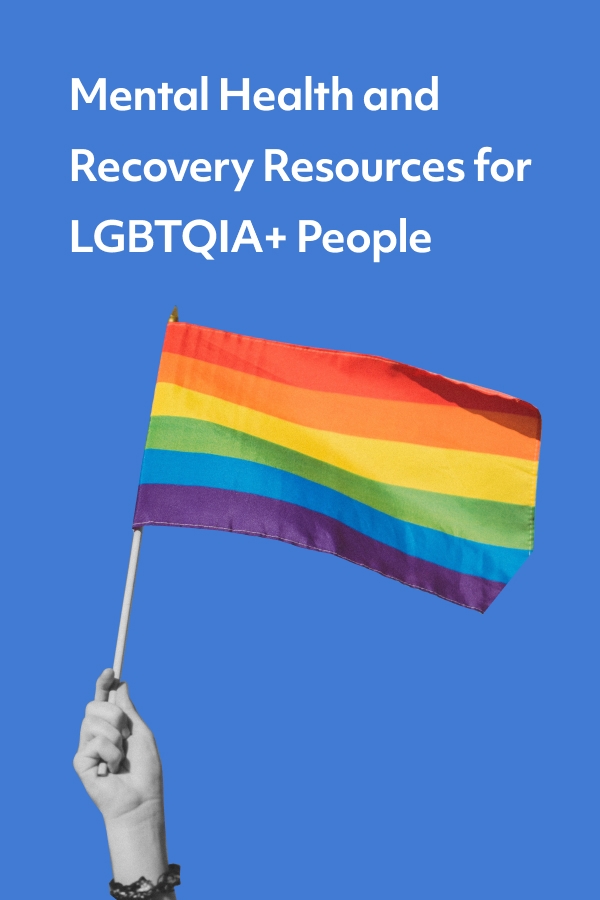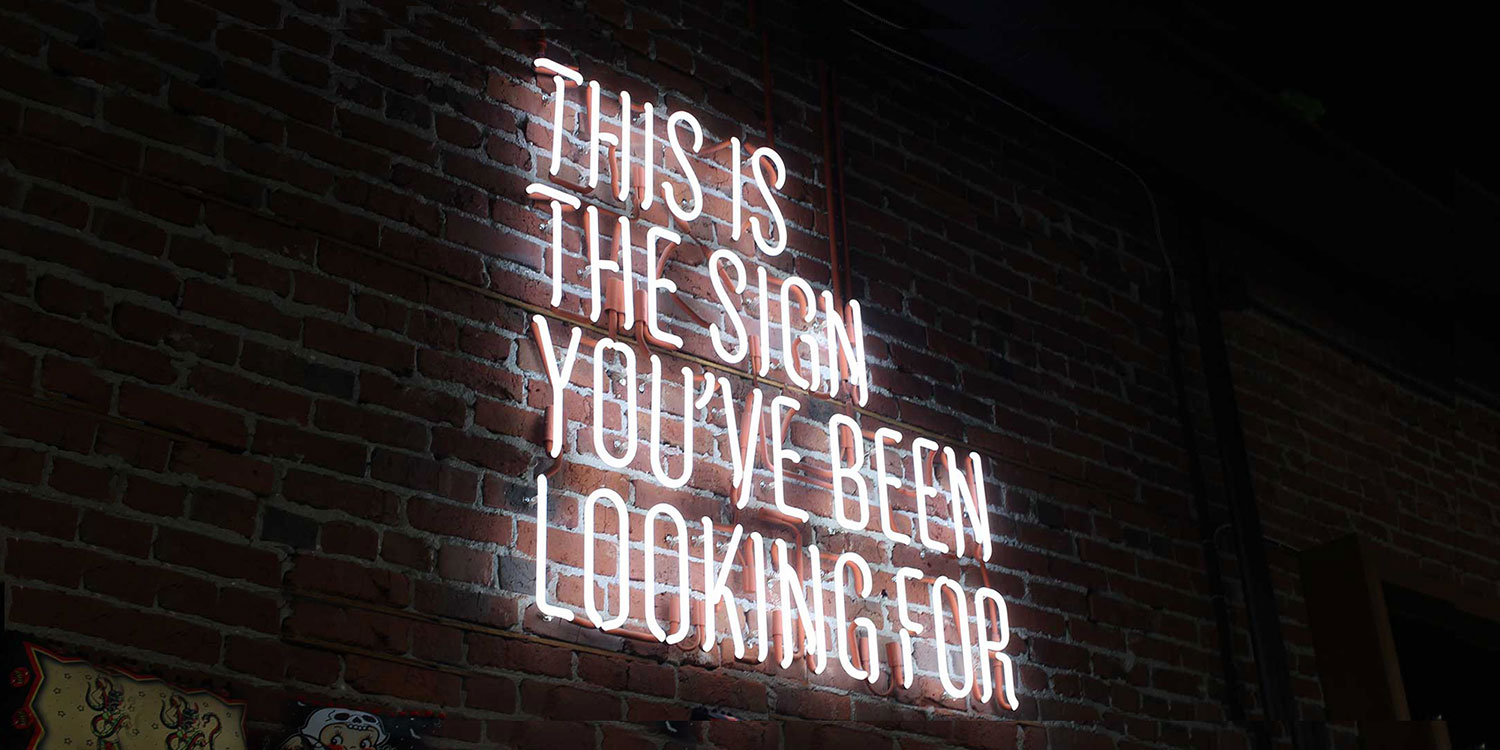People who identify as LGBTQIA+ face a number of health risks, including an increased risk of developing substance use disorders. Despite this reality, the queer population is largely underserved in terms of specific addiction recovery resources that are identity- and sexuality-affirming and tailored to the challenges facing them.
A physician at Workit Health, Dr. Kevin Armington explains, “There are data showing that substance use disorder (SUD) and alcohol use disorder (AUD) are much more prevalent among these communities compared to the general public.”
This guide provides an overview of the LGBTQIA+ community, the unique challenges and obstacles folx face, as well as a list of resources that include addiction recovery support, harm reduction tools, and how to find resources that are affirming of your identities.
What does LGBTQIA Stand for?
Which acronym to use is one of the perennial questions of the queer community! The shorter LGBT is more common, but LGBTQIA+ is more inclusive. If you haven’t encountered this acronym before, LGBTQIA+ represents a group of individuals who identify as lesbian, gay, bisexual, transgender, queer or questioning, intersex, agender or asexual, and any combination therein. The identities within this acronym relate to the intersecting spectrums of gender identity, sexual orientation, and gender expression. For more information check out Acronyms Explained by Outright International.
LGBTQIA Mental Health Facts
In addition to other health risks and a lack of access to resources, LGBTQIA+ individuals also face a higher risk of co-occurring mental health disorders due in large part to societal pressures and stigma. These include self-harm, suicidal ideation, depression, and anxiety, among others. Trans youth experience higher levels of depression, suicidality, self-harm, and eating disorders. Gay men are three times more likely as straight men to have an eating disorder, and lesbian and bisexual women are twice as likely as straight women to suffer from binge eating.
The significance of these disparities shows that we need greater intervention. Especially as the risk of overdose is three times higher for those with depression and six times higher for those with serious mental illness.
Key Facts About Addiction in the LGBTQIA Community
It is estimated that 30 percent of LGBTQ+ individuals suffer from some form of addiction, compared to 9 percent of the general population (Recovery Research Institute). Those who identify as being under the LGBTQIA umbrella often face a number of stressors, like stigma, discrimination, and a greater risk of violence. These can lead to an increased risk of substance use and behavioral health issues.
The Substance Abuse and Mental Health Services Administration (SAMHSA), the federal agency that regulates treatment of substance use disorders, estimates that gay and transgender people meet the criteria for SUD at 2-3 times the rate of the general population. Dr. Armington says, “This is not surprising, given that for most of our history, many LGBTQIA people have been pushed to the margins of society—sometimes literally kicked out of their families and churches, excluded from important societal institutions like marriage, physically and emotionally attacked. All these factors inflict tremendous emotional pain and make people feel isolated. Drug and alcohol use can soothe temporarily the pain of isolation.”
LGBTQIA+ Drug Use
LGBTQ+ individuals are more likely to start drinking earlier, and they have a greater likelihood of experiencing substance use disorder in their lifetime. When combining substances use, addiction is 2 to 4 times higher in the LGBT community than that of the general population Overall, gay, lesbian, and bisexual individuals are 18 percent more likely to have alcohol use disorder, 20 percent more likely to have substance use disorder, and 5.9 percent more likely to misuse prescription medications.
Dr. Armington believes that the lack of reliable information for many youth about sexual development is a contributing factor in this disproportionate prevalence of substance use disorders. He explains, “Powerful elements in our society work very hard to limit and control sex education in our public schools. Withholding or strictly limiting sex education particularly affects LGBTQIA adolescents, who may not understand their natural feelings or how to express them. When they are able to start exploring their sexuality, it seems logical to turn to drugs or alcohol to overcome the fear and ignorance they may have about exploring their natural urges. Over time, drug and alcohol use can become a habitual, or even a prerequisite for intimacy and sexuality.”
Chemsex
Chemsex is the use of drugs to enhance one’s sex life, in terms of duration and pleasure, and to reduce inhibitions. It is most commonly engaged in among gay and bi men. The main substances used during chemsex are stimulants like methamphetamine, mephedrone, and sedative-type drugs GHB and GBL.
There are more pronounced risks associated with chemsex, such as the risk of overdose, complications from mixing substances, risks from intravenous drug use, and sexual health risks. You can read more about chemsex on Be in the KNOW’s website, Chemsex & HIV.
What fuels addiction in the LGBTQ+ Community?
According to Jeff Zacharias LCSW, CSAT, CAADC there are a few factors that fuel addiction within the LGBTQIA+ community, including:
- Socialization: Substance use is a common part of queer culture, as many social events happen in bars. Pride parades often include consumption and celebration of alcohol and drugs, as they are often seen as a big party. And last, alcohol advertisers specifically target this market, thus normalizing higher than average drinking consumption.
- Deficiencies in the health care system: Only 77 percent of lesbian, gay, and bisexual people have access to healthcare. That number is significantly reduced for trans folx, with as few as 57 percent having access, and many states not covering services for their identities.
- Stress: Some stressors in the LGBTQIA community include: Social prejudice; employment stress and discrimination (being fired or denied a job due to LGBT identification); housing stress, such as higher levels of homelessness and unsafe/discriminatory housing due to sexuality; and limited access to medical care.
- Homophobia/heterosexism: External and internalized homophobia and heterosexism can lead to depression, anxiety, guilt/shame, isolation, and low self-esteem/self-worth.
LGBTQIA Health Disparities
We asked Dr. Armington why LGBTQIA face the greatest health disparities. He explains, “For young homeless LGBTQIA people, lack of access to healthcare is obviously one of the reasons. Also, internalized shame can be an impediment to clear communication between LGBTQIA people and their healthcare providers.”
Dr. Armington says that fearing that revealing one’s sexuality to a medical professional will lead to judgment or discrimination is still common. However, he believes that keeping LQBTQIA identity and/or behaviors from healthcare providers can present individual risks. “Withholding this information may result in the person missing out on very important information such as availability of pre- and post-exposure prophylaxis for HIV infection. Trans folks may opt not to reveal a symptom they associate with their assigned sex, leading to delayed diagnosis of certain illnesses.”
Another issue is the political climate within the US, Armington says. “A recent very disturbing political trend is passage of bills in some states making it illegal to treat young trans individuals with hormones. If there is not enough opposition to misguided and dangerous initiatives like this, I believe we will see politics interfering more and more in healthcare provided to the LGBTQIA and other vulnerable communities.”
Improving queer recovery resources
Addiction treatment is often largely heteronormative and tailored to cis-gendered individuals, especially within mutual-aid meetings. Therefore, a critical part of recovery from SUD for LGBTQIA individuals is finding a community of people with their identities, affirming information from specific treatment programs tailored to their unique needs, and physicians and medical staff that are aware of the characteristics of LGBTQIA SUDs.
- LGBTQIA Peer Support
“Interaction with strangers and developing new support communities is a key element to recovery,” says Dr. Armington. “For a lot of LGBTQIA people, this means coming out again—which may feel too stressful for someone who is about to let go of their drug of choice, something they think they can’t live without.” - Tailored LGBTQIA Addiction Treatment Facilities
From a formal treatment perspective, it is critical that in-patient and residential programs should be upfront on their websites, literature, written philosophies, and any public statements about whom they serve. “Leaders in these programs should not shy away from using terms like gay, transgender, or queer, or otherwise acknowledging the presence of LGBTQIA in the community,” Dr. Armington says.In some treatment settings, it may be desirable to create a group specifically for LGBTQIA people so that members can have a space where they feel less self-conscious when discussing their identities. But they should also participate fully in all aspects of the program with all other members. “I am an advocate for programs that include all communities, but I recognize that some LGBTQIA individuals will only be comfortable entering treatment if the program specifically caters to their community. And that is a valid choice as well,” explains Dr. Armington. - Medical Training
Schools and training programs for future treatment providers for substance use and alcohol use disorders need to include LGBTQIA issues and individuals in their curriculum. “When I was in medical school, LGBTQIA issues were discussed only when I or one of the few other vocal students stood up and insisted that they be addressed,” says Dr. Armington. - Harm Reduction in the LGBTQIA community
Harm reduction as a movement originated in the LGBTQIA community, with HIV activists seeking to reduce harm among the transmission of HIV/AIDS. Since then it has expanded considerably to include needle exchanges, safe consumption sites, free overdose prevention training and resources, moderation management, medication-assisted treatment, and much more. You can learn more about harm reduction for the LGBTQIA community in this interview with Shauntelle Hammonds and in our webinar, Changing Perspectives on Harm Reduction.
Making recovery spaces more inclusive
While straight cis people in recovery may believe they’re already welcoming to LGBTQIA individuals, there may still be room for improvement. It’s common to encounter assumptions and micro-aggressions that people outside the community don’t recognize but may be participating in. The following list of recommendations could be applied to any mutual-aid meeting, recovery encounter, and medical professionals involved in the addiction treatment industry. This is an excerpt from a blog I wrote for Faces & Voices of Recovery:
- Don’t assume an individual’s sexuality or their gender. State your own pronouns when you introduce yourself and encourage other group members to do the same, especially if they are cisgendered. For example: “I’m Liv. My pronouns are she, her, hers.”
- Don’t use heteronormative cliches like “men stick with the men and women with women.”
- Consider reviewing literature and changing gendered pronouns to neutral “they/them/theirs.”
- Be conscious of your privilege around access to healthcare, housing, and other facilities and resources. Don’t assume that everyone has the same opportunities.
- Advertise your group on the meeting schedule as LGBTQ+-affirming and don’t share images that are heteronormative or clearly gendered. Try to represent equity and inclusion in choosing images.
- Consider renaming bathrooms to be gender-neutral.
- Don’t silence an individual’s experience relating to their sexuality. Be mindful that they may have experienced prejudice and other harms as a result. These types of stressors are just as valid as any other.
- Educate yourself about trauma, and practice holding a trauma-informed space.
- When holding meditations, give people the option of keeping their eyes open and moving around.
- Announce at the beginning of the meeting where the exits are, and make it clear that if anyone feels uncomfortable at any time they are free to take a time-out and leave the room.
- Ask members to be conscious about sharing traumatic events, as they may be triggering for others.
- Consider holding a specific time during the meeting for people who find it hard to share.
LGBTQIA Recovery Resources
Below is a list of specific resources for LGBTQIA individuals, including how to find a queer, trans, or other identity therapist, safe spaces for queer individuals, and a list of peer-based mutual-aid support.
How to find a queer, trans, and/or other identity therapist
The following directories provide nationwide lists of therapists that should be welcoming and affirming of your identities.
- LGBTQ Psychotherapists of Color (QTOC) (website)
- GLMA: Health Professionals Advancing LGBTQ Equality (website)
- QTIBIPOC Healing Space (Facebook community)
- Psychology Today Directory of LGBTQ+ Therapists (website)
- National Queer and Trans Therapists of Color Network (website)
Chem sex resources
Chemsex and HIV information, harm reduction tips, syringe exchange programs, PrEP, and resources can be found on the following organizations’ websites:
- AIDS United
- Be in the KNOW
- Change Grow Live
- HIV.gov
- Harm Reduction Coalition
- NEXT Naloxone
- NASEN (sterile syringes)
Workit Health also offers PrEP for members of our clinical treatment programs for opioids, alcohol, or stimulants.
Recovery Groups
The following list is of mutual-aid groups, run by individuals in recovery:
Find a meeting or group for LGBTQIA recovery
- Sonder (website)
- Gay & Sober (website)
- Gays and Lesbians in AA (website)
- LGBTQIA+ Queer Sangha – Recovery Dharma (website)
- QTIBIPOC Healing Space (Facebook community)
Find a meeting not specifically for LGBTQIA people
While the following groups may not specifically be for LGBTQIA-only individuals, many groups offer some LGBTQIA meetings. Check out their websites to see the meetings available.
- Soberistas: For women only.
- SMART Recovery
- Recovery Dharma
- Refuge Recovery
- LifeRing Secular Recovery
- Recovery 2.0: Provides online meetings, yoga, and meditation classes.
- Unity Recovery, WEconnect and The Alano Club (website): Offer daily digital recovery meetings of all types.
- Women for Sobriety: For women only.
- Moderation Management
BIPOC Resources
Similarly, while these are BIPOC-specific peer groups, some are not LGBTQIA-specific. However, as with other mutual-aid meetings, many have LGBTQIA groups available.
- White Bison/Wellbriety Movement
- Wellbriety Community
- Native American Rehabilitation Association
- BIPOC Only Recovery Dharma
- Asian Mental Health Project
- Brown Girl Therapy
- Decolonizing Therapy
- Northwest Portland Area Indian Health Board (Covers OR, WA, and IA)
- South Asian Mental Health Initiative & Network
Other Recovery Groups
- The Recovery Gym: A project of the Alano Club of Portland that runs classes for people in recovery.
- The Phoenix: Offers group fitness for people in recovery
Sober spaces
There are many alcohol-free safe spaces for the LGBTQIA+ community. This is often considered revolutionary for this community, which is often centered around substance consumption. You can find a detailed directory of alcohol- and drug-free spaces in this article by Them: Sober Queer Spaces Are Giving LGBTQ+ People a Place to Just Be
Publications
There are a couple of recovery publications and blogs that are written by many writers identifying as LGBTQIA, including Workit Health blog.









